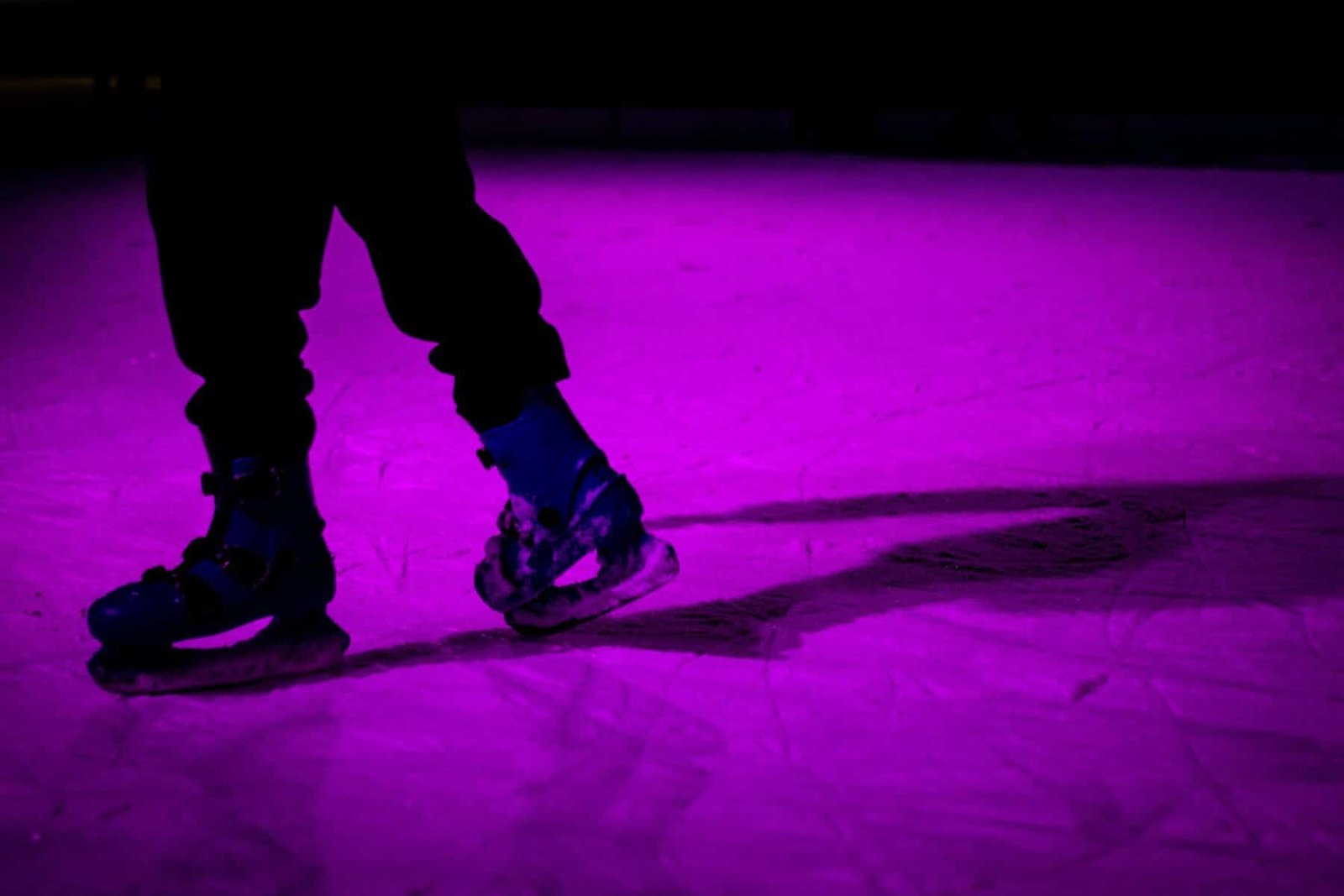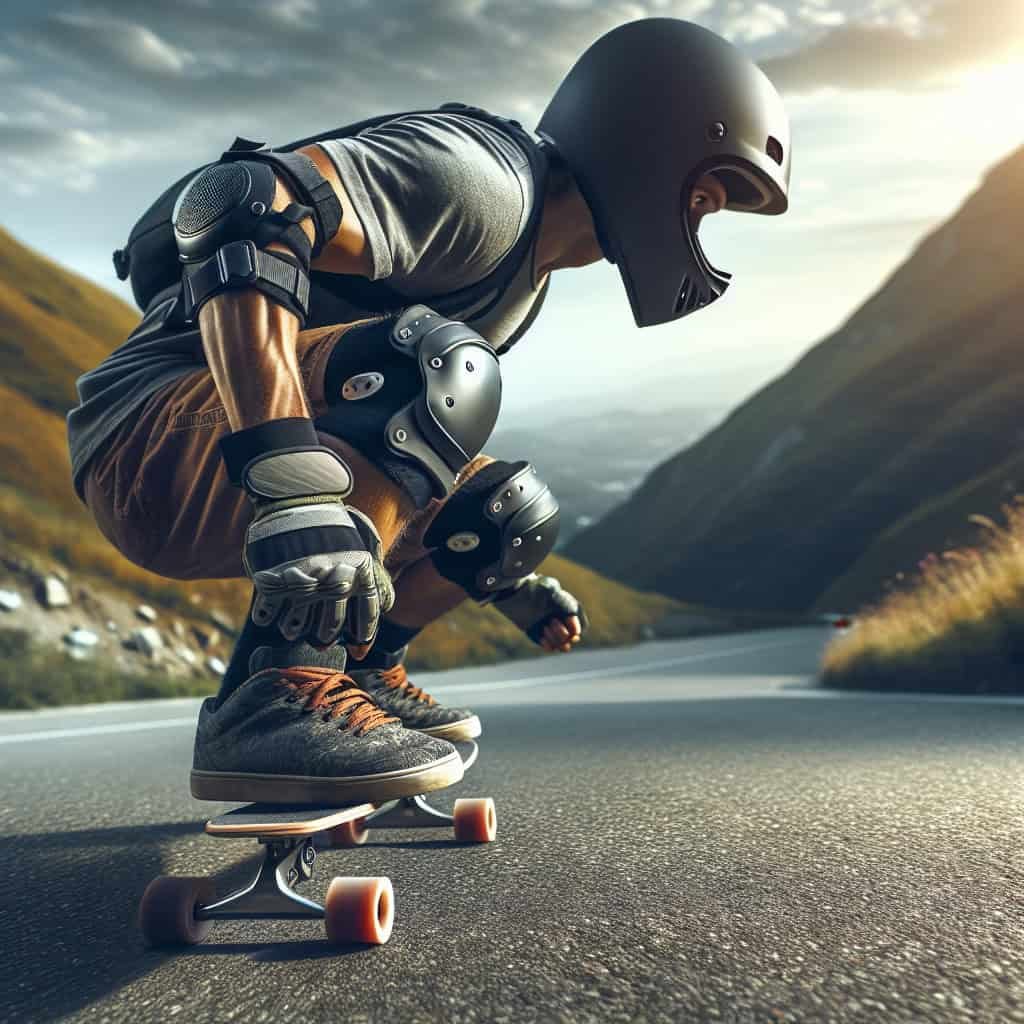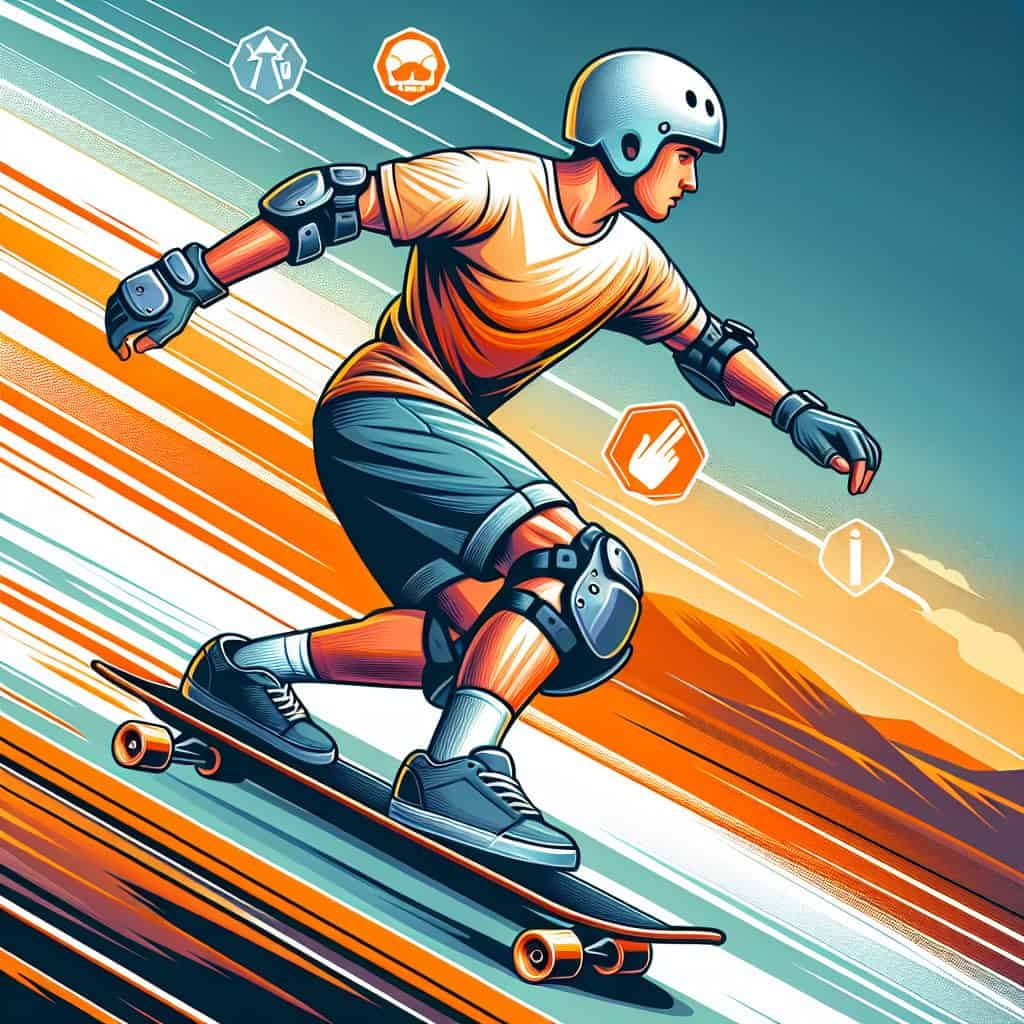Skateboarding downhill can be an exhilarating experience, but it’s important to prioritize safety to ensure a smooth ride. Whether you’re a seasoned skater or just starting out, there are a few key tips to keep in mind. From wearing protective gear and choosing the right board, to maintaining control and practicing balance, this article will provide you with valuable guidance to navigate those thrilling downhill rides with confidence and minimize the risks associated with this adrenaline-pumping activity. So grab your board and let’s get rolling to discover some essential tips for skateboarding downhill safely!

Choosing the Right Gear
Wearing a Helmet
When it comes to skateboarding downhill, safety should be your top priority. One essential piece of gear that you should never go without is a helmet. Wearing a helmet is crucial to protect your head from any potential injuries that could occur during your downhill ride. Look for a helmet that is specifically designed for skateboarding, as it will offer the necessary protection and fit securely on your head. Remember, wearing a helmet may not make you look the coolest, but it could save your life.
Using Knee and Elbow Pads
In addition to a helmet, it’s highly recommended to use knee and elbow pads while skateboarding downhill. These protective gears will provide an extra layer of cushioning and absorb any impact that may occur if you fall or crash. Knee and elbow pads are especially important during downhill rides because the higher speeds and increased risk of falls make the potential for injuries even greater. Choose pads that are comfortable, offer good mobility, and fit securely to ensure maximum protection.
Investing in a Good Pair of Shoes
Your choice of footwear is essential in skateboarding downhill safely. Look for a good pair of skateboarding shoes that are specifically designed to provide the necessary grip, stability, and support while riding. Shoes with a flat sole and durable construction are ideal for maintaining a solid footing on your skateboard during high-speed descents. Additionally, make sure the shoes fit properly to prevent any discomfort or blisters that could distract you from your ride. Investing in quality shoes will not only improve your performance but also enhance your safety on the road.
Understanding the Terrain
Analyzing the Road Conditions
Before embarking on a downhill skateboarding adventure, take the time to analyze and assess the road conditions. Understanding the terrain you will be riding on is crucial for your safety. Check for any cracks, potholes, or uneven surfaces that could pose a potential hazard. Smooth asphalt or concrete surfaces are generally more suitable for downhill skateboarding as they offer better traction and stability. Avoid roads with loose gravel, wet pavement, or debris that could cause you to lose control or slip. By evaluating the road conditions before your ride, you can better prepare yourself and minimize the risks involved.
Identifying Obstacles
While skateboarding downhill, it’s essential to keep a keen eye out for any potential obstacles that might come your way. Be on the lookout for parked cars, pedestrians, or animals that could unexpectedly cross your path. Take note of any road signs, curbs, or traffic signals that could affect your ride. Being aware of your surroundings will allow you to anticipate and react to obstacles in a timely and controlled manner, helping you maintain your balance and avoid potential collisions. Remember, staying vigilant and observant is key to safely navigating the terrain while skateboarding downhill.
Avoiding Rough Surfaces
To ensure a smooth and safe downhill ride, try to avoid rough surfaces as much as possible. Rough patches of road can decrease your control and increase the risk of accidents. Look out for cracks, bumps, or uneven patches that could cause your skateboard to jolt or lose traction. Aim for smooth and well-maintained roads that provide a consistent surface for your ride. By steering clear of rough surfaces, you’ll have better control over your skateboard and reduce the likelihood of falls or injuries.
Mastering the Basics
Learning Proper Skateboarding Technique
Before attempting downhill skateboarding, it’s crucial to master the basics of skateboarding. Familiarize yourself with the correct stance, foot positioning, and pushing techniques. Practice riding on flat terrains or gentle slopes to build your confidence and develop a solid foundation of skateboarding skills. Learning proper technique will not only help you maintain control during your downhill rides but also improve your overall skateboarding experience.
Developing Balance and Control
Developing a sense of balance and control is essential for safely skateboarding downhill. Start by practicing balancing on your skateboard while stationary, gradually progressing to short and controlled descents on gentle slopes. This will help you improve your ability to shift your weight smoothly, maintain stability, and adjust to changes in speed or direction. Practicing balance and control regularly will enhance your riding skills and confidence, making you better equipped to handle downhill descents.
Practicing Braking
Effective braking is an essential skill to have when skateboarding downhill. Knowing how to slow down or come to a complete stop safely is critical for maintaining control and avoiding accidents. Start by practicing foot braking, wherein you gradually press your back foot against the ground to slow down. As you gain more experience, you can also explore other braking techniques such as power slides. Regularly practicing braking techniques will not only improve your ability to control your speed but also enhance your overall safety on downhill rides.
Maintaining Equipment
Regularly Checking the Skateboard
Regular inspection and maintenance of your skateboard are crucial for a safe downhill ride. Before each session, take a few minutes to check your skateboard for any signs of wear or damage. Inspect the deck, trucks, wheels, and bearings for any cracks, loose parts, or excessive wear. It’s important to tighten any loose bolts and replace any worn-out or damaged components before heading downhill. By ensuring that your skateboard is in good condition, you can minimize the risk of equipment failure, which could lead to accidents or injuries.
Keeping Wheels and Bearings Clean
Clean wheels and bearings are essential for optimal performance and safety while skateboarding downhill. Over time, dirt, dust, and debris can accumulate in your wheels and bearings, affecting their smoothness and performance. Regularly clean your wheels using a soft brush or rag to remove any dirt or grime. Additionally, lubricate your bearings periodically to keep them running smoothly. Well-maintained wheels and bearings will provide better traction, smoother rides, and reduce the risk of accidents caused by compromised performance.
Replacing Worn-out Parts
Skateboarding downhill can put a lot of strain on your equipment, causing parts to wear out quicker than during regular riding. To ensure your safety, it’s important to replace any worn-out or damaged parts promptly. Keep an eye on the condition of your wheels, bearings, trucks, and deck. If you notice significant wear or any signs of damage, replace the affected parts as soon as possible. Investing in quality components and keeping your equipment in good shape will not only improve your overall skateboarding experience but also help prevent accidents caused by worn-out parts.

Choosing the Right Route
Opting for Smoother and Less Crowded Roads
When selecting a route for your downhill skateboarding adventure, prioritize smoother and less crowded roads. Choose roads that are well-maintained and offer a consistent surface, free from potholes, cracks, or debris. Additionally, try to avoid roads with heavy traffic or congested areas where it may be difficult to maneuver and halt safely. Opting for smoother and less crowded roads will provide you with a safer and more enjoyable experience while skateboarding downhill.
Avoiding Busy Intersections
Intersections can be particularly risky for downhill skateboarders. The high speeds involved can make it challenging to react to sudden changes in traffic flow or unexpected maneuvers by other vehicles. To reduce the risks, avoid busy intersections whenever possible by planning your route accordingly. Use side streets or less congested areas to minimize the likelihood of encountering heavy traffic or potential hazards. By choosing routes that bypass busy intersections, you can maintain better control and reduce the chances of accidents caused by unexpected interactions with other road users.
Considering Visibility and Lighting
Skateboarding downhill safely requires adequate visibility, especially during low-light conditions. Always plan your rides during daylight hours when visibility is naturally better. However, if you find yourself riding during dusk or dawn, ensure you are visible to both motorists and pedestrians. Wear bright and reflective clothing or accessories to increase your visibility. Additionally, consider attaching lights or reflective tape to your skateboard or helmet to make yourself more noticeable. By prioritizing visibility and lighting, you can significantly decrease the chances of accidents caused by poor visibility.
Assessing Personal Skill Level
Knowing Your Limits
Understanding your skill level and limits is crucial to skateboarding downhill safely. Be honest with yourself about your abilities and do not attempt descents that are beyond your current skill level. Gradually progress from easier slopes to steeper descents as you gain experience and confidence. Pushing yourself too far beyond your limits can lead to loss of control and accidents. By staying within your skill range, you can enjoy a safe and fulfilling downhill skateboarding experience.
Gradually Increasing Speed and Difficulty
To continuously improve your skills while maintaining safety, it’s important to gradually increase your speed and the difficulty of your downhill rides. Start with slower speeds and less challenging routes, steadily progressing to higher speeds and more technical descents. This progressive approach allows you to adapt and refine your techniques while building confidence and control. Pushing yourself too quickly or attempting advanced maneuvers without the necessary skills could result in accidents or injuries. By gradually increasing speed and difficulty, you can safely and effectively challenge yourself in the world of downhill skateboarding.
Seeking Professional Guidance
If you’re new to downhill skateboarding or looking to refine your skills, seeking professional guidance can be highly beneficial. Consider taking lessons or participating in skateboarding clinics led by experienced instructors. These professionals can provide valuable insights, techniques, and safety tips specific to downhill skateboarding. They can help you develop proper form and offer guidance on how to effectively navigate different terrains. By learning from experts, you can accelerate your learning curve, improve your technique, and minimize the risks associated with downhill skateboarding.

Staying Attentive and Focused
Avoiding Distractions
Maintaining focus and avoiding distractions is essential for safe downhill skateboarding. Keep your attention solely on the road ahead and your surroundings. Avoid using your phone, listening to loud music, or engaging in conversations that could divert your focus. Being fully present and attentive will allow you to react quickly to any changes or potential hazards that may arise. Remember, even a split-second of distraction can have devastating consequences, so keep your eyes and mind solely on your ride.
Keeping Eyes on the Road Ahead
When skateboarding downhill, always make it a habit to keep your eyes on the road ahead, scanning for any potential obstacles or hazards. Look ahead and anticipate any changes in the terrain, traffic, or pedestrians. This proactive approach will give you more time to react and adjust your riding accordingly. By maintaining a clear line of sight and staying focused on the road, you can make informed decisions and react swiftly to ensure your safety while skateboarding downhill.
Maintaining Awareness of Surroundings
In addition to focusing on the road ahead, it’s crucial to maintain awareness of your surroundings while skateboarding downhill. Pay attention to vehicles, pedestrians, and other potential obstacles in your periphery. By staying aware of your surroundings, you can make necessary adjustments to your speed, line, or path to maintain safety and prevent accidents. Remember, being fully aware and present in the moment is key to enjoying a safe and enjoyable downhill skateboarding experience.
Avoiding Dangerous Maneuvers
Steering Clear of Sharp Turns at High Speeds
Downhill skateboarding often involves high speeds, which can make sharp turns extremely dangerous. Attempting to execute tight turns at high speeds can result in loss of control, causing you to skid or fall. To stay safe, avoid sharp turns or turns where visibility is limited. Opt for wider turns that allow you to maintain control and reduce the risk of accidents. By steering clear of dangerous sharp turns, you can reduce the likelihood of falls and injuries while skateboarding downhill.
Avoiding Dangerous Tricks or Stunts
While skateboarding downhill can be exhilarating, it’s important to resist the temptation to perform dangerous tricks or stunts. Downhill skateboarding already carries inherent risks, and attempting tricks without proper training or experience further increases those risks. Stick to safe and controlled riding techniques that prioritize balance, stability, and control. By avoiding dangerous tricks or stunts, you can focus on maintaining safety and minimizing the chances of accidents or injuries.
Not Attempting Unfamiliar Techniques
Downhill skateboarding is not the time to experiment with unfamiliar techniques or maneuvers. Only attempt techniques that you are comfortable and familiar with, as new or unfamiliar techniques may compromise your control or balance. Stick to what you know and have practiced extensively to ensure your safety while descending steep slopes. Remember, being confident in your skills and sticking to techniques you are proficient in will help you navigate downhill rides more safely and effectively.

Practicing Emergency Stops
Learning Effective Foot Braking
Mastering the art of foot braking is crucial for emergency stops while skateboarding downhill. Foot braking involves gradually applying pressure to the ground with your back foot to slow down or come to a complete stop. Practice this technique on flat terrain or gentle slopes to build confidence and improve your ability to control your speed during downhill descents. Regular practice will allow you to perform emergency stops more effectively and confidently when needed, ensuring your safety while skateboarding downhill.
Understanding Power Slides
Power slides are an advanced braking technique that allows you to control your speed by sliding your wheels sideways. This technique involves shifting your weight, positioning your feet, and applying pressure on your wheels to induce controlled skids. Mastering power slides takes practice and experience. Start by practicing on gentle slopes and gradually progress to steeper descents as you gain proficiency. Remember, power slides can be risky if not executed correctly, so always prioritize safety and gradually develop your skills in order to execute effective emergency stops.
Knowing How to Bail Safely
In downhill skateboarding, sometimes accidents are inevitable. Therefore, it’s important to know how to bail safely in the event of loss of control or an impending crash. When bailing, try to roll with the fall to absorb the impact and minimize the risk of injury. Avoid instinctively putting your hands out to break your fall, as this can lead to wrist injuries. Instead, tuck your arms in and aim to roll onto your padded parts, such as your shoulder or buttocks. Practicing proper falling techniques in a controlled environment will prepare you to react instinctively and protect yourself during unexpected situations while skateboarding downhill.
Riding with Others
Communicating with Fellow Skaters
If you decide to ride downhill with others, effective communication is key to ensure everyone’s safety. Develop a set of signals or calls to alert each other about potential hazards, changes in speed, or route adjustments. Verbalize intentions and use hand signals to convey messages when necessary. Clear and concise communication will help everyone stay aware and react accordingly, reducing the risk of accidents or collisions. Prioritize open and consistent communication when riding with others to maintain a safe and enjoyable downhill skateboarding experience.
Keeping a Safe Distance
Maintaining a safe distance between fellow skaters is essential to prevent accidents while riding downhill as a group. Riding too closely to others can limit your visibility and reaction time, increasing the likelihood of collisions. Keep a comfortable distance between yourself and the skaters in front of you, allowing ample space for sudden stops or unexpected maneuvers. By keeping a safe distance, you can ensure everyone has enough room to maneuver, react, and maintain their safety while skateboarding downhill together.
Watching Out for Each Other
When riding downhill with others, it’s important to look out for each other’s safety. Keep an eye on your fellow skaters, noting any changes in their riding behavior or potential hazards they may not notice. Communicate any concerns or observations in a timely and constructive manner. By watching out for each other, you can form a tight-knit community that prioritizes safety and supports one another during downhill skateboarding adventures.
In conclusion, skateboarding downhill can be an exhilarating and thrilling experience, but it is crucial to prioritize safety above all else. By choosing the right gear, understanding the terrain, mastering the basics, maintaining your equipment, choosing the right route, assessing your skill level, staying attentive and focused, avoiding dangerous maneuvers, practicing emergency stops, and riding with others responsibly, you can ensure a safe and enjoyable downhill skateboarding journey. Remember to always be cautious, practice regularly, and respect your limits. Enjoy the rush, but stay safe!

